-
 Published: Oct 9, 2024
Published: Oct 9, 2024
-
 20 min. read
20 min. read
-
 Macy Storm
Macy Storm Content Marketing Consultant
Content Marketing Consultant
- Macy is a content marketing consultant with over five years of experience creating content for dozens of industries including home services, recreation, and education. She’s written about every marketing topic under the sun, from SEO to AI to email marketing. Her work has been featured by Search Engine Journal, HubSpot, Entrepreneur, Clutch, and more. In her free time, Macy enjoys crafting, reading comic books, and walking her dog Daisy.
Whether you want to update your ecommerce approach or see what other companies are doing in your industry, ecommerce search engine optimization (SEO) trends are essential to follow. SEO is constantly evolving, so it’s crucial to keep up with any changes to ensure your ecommerce business performs well in search results.
In this post, we’ll cover 12 ecommerce trends to help you optimize for current customer preferences, checkout methods, and more.
12 Ecommerce SEO Trends for 2025
Just keep reading — and check out our online marketplace guide to start selling more online!
1. Optimize for voice search
Voice search optimization is one of the fastest-growing ecommerce SEO trends for using to search online. It involves using voice search devices to conduct online searches and even purchase products. Some of the most popular devices include Alexa, Google Home, Siri, and Cortana.
Did you know that 29 percent of people use voice devices to shop, and 41 percent of voice device owners plan to use them for shopping in the future? With voice search continuing to gain popularity, it’s important to optimize your site to reach more voice search visitors. It’s important to note that voice search optimization is slightly different from traditional SEO — and if you want to attract voice search customers, you must adapt and audit your ecommerce SEO plan for these users.
How to use voice search for ecommerce SEO
To start adapting your SEO campaign for voice search, there are a few steps you can take:
1. Choose long-tail keywords
Similar to traditional SEO, you’ll want to choose long-tail keywords for voice search queries. Long-tail keywords are keywords that contain three or more words. An example of a long-tail keyword is “black steel toe boots.” This is a specific keyword that tells you exactly what your audience wants to find.

When they search with this long-tail keyword, they want to find products that are black steel toe boots. It’s important to optimize for long-tail keywords because many people will search for long-tail keywords when conducting voice searches.
Many voice searches are 6-10 words long or more. People tend to say more when they speak than when they type. By adapting for long-tail keywords, you’ll help your business reach more interested leads. You’ll appear in more relevant search results and help your business rank higher in relevant results.
2. Optimize for questions
When users conduct searches on voice search, they are more likely to ask questions than say phrases. Users will say “Where can I buy black steel toe boots?” instead of “black steel toe boots.” It’s important that you optimize for queries. People are going to ask questions instead of stating keywords. This is one of the biggest differences between voice search and SEO.
3. Use conversational phrases
When you adapt to voice search, consider how people speak. If you want to appear in front of relevant leads, you must account for more conversational words and phrases they may use.
Dialect can dictate if you appear in relevant voice search results. For instance, many people say “soda,” while other people say “pop.” If you’re trying to rank in a region that uses “pop,” you’ll want to use that keyword to ensure you attract leads to your page. You don’t want to miss out on leads because you haven’t adapted for the right phrases.
2. Build a stronger brand
Your brand is a crucial part of your business. When people are more familiar with your brand, they are more likely to choose you over the competition. Brand familiarity builds trust with your audience. They know your brand well and feel confident about purchasing your products.
In addition to building brand familiarity with your audience, you also want to build relationships with people in your niche. Whether they’re bloggers or social media influencers, it’s important to build up your brand to these people, so they will feature your products on their platforms.
How to build a stronger brand for ecommerce SEO
Here is how you can help strengthen your ecommerce brand:
Be consistent
The best way to build your brand is to make it consistent. If you want people to remember your business, you must make it easy for them. Being consistent across the board will help build your brand.
When you post content on your site, your blog, or any social media site, your brand should appear the same. It should have the same color, design, and font on any photos or videos you post. This will help you keep your brand image the same.
Focus on your tone
In addition to the visual aspects of your brand, your brand tone must be consistent too. When you create content or post information on your site, ensure that your content has the same tone. This will help you build up your brand for your audience.
Show your value
If you want to distinguish your brand from other ecommerce brands, show your audience the value of your brand.
As soon as they enter your site, they should feel a part of your business. Make your visitors feel welcome and immediately engaged them. This can be something as simple as giving them an offer the first time they get on your site.
A coupon for a percentage off a product can immediately engage them and get them to interact with your brand.
3. Create a positive UX
UX is a crucial part of your online presence — it’s also a common ecommerce SEO problem. When you have leads on your site, you must provide them with a positive UX.
If leads have a good experience on your site, they will remain engaged and interested in your page. This means they are spending more time getting to know your business and learn about your products.
Creating a good UX will help your business earn conversions. People will spend more time getting to know your brand and will choose you over the competition. It’s an opportunity for your business to grow financially and earn repeat customers.
How to improve UX for ecommerce SEO
There are various aspects you can alter to improve the UX for your audience. Here are a few main elements you’ll want to focus on in 2025:
- Improve page speed: Page speed is an important factor in determining whether leads remain on your page or leave. If your page loads too slowly, leads will leave your page for a competitor’s page. To prevent this from happening, invest in page speed services to ensure that your page is running in top shape.
- Focus on UX design: When users browse your site, it’s important that your design is friendly and easy to use for your audience. If you want to keep leads interested in your page, you must make it easy for your audience to navigate your site. Focus on keeping your layout and navigation easy to use for your audience.
- Add engaging elements: Don’t bog down your site with text. Include visual elements such as photos, infographics, and videos to keep your audience interested and engaged on your page. It will help you provide a better experience for your audience and makes your site more visually interesting.
By improving the UX, you’ll keep leads on your site longer. It will help you increase engagement on your page and earn more conversions for your business.
4. Monitor your analytics
If you want to drive better results with your SEO campaign, you must focus on your analytics. Your site’s analytics help you understand how people interact with your site and where you can improve your campaign.
How to monitor analytics for ecommerce SEO
You can track your analytics with Google Analytics or programs like RevenueCloudFX, our proprietary software for WebFX clients. This gives you insight into your campaign’s performance.
You can monitor analytics such as:
- Impressions
- Click-through rate (CTR)
- Dwell time
- Conversions
These metrics will affect your performance in the search results. They matter to Google’s algorithm and influence where your site appears.
When you monitor your analytics, you create an opportunity to improve your site. Improving your site will provide your audience with a better experience, which nudges them towards purchasing your products or services.
Your UX and analytics go hand in hand because they focus on creating a better experience for your audience, which leads to more conversions for your business.
5. Secure your site
As the Internet continues to grow, online security is increasingly more important. You want your customers to feel secure when they’re on your site. The best way to do this is to ensure that you have a secure site.
A secure site helps people feel more comfortable entering their personal information to buy products on your site. That means that the more seecure your site is, the more conversions you can earn!
How to secure your site for ecommerce SEO
Here are a few ways to help with ecommerce website security:
- Use an SSL certificate: Sites that have “https” at the front of the link are secure sites. You must earn and activate your SSL certificate to get the “https” in front of your website.
- Select a secure hosting service: Your website is only as secure as your host. Finding a secure hosting service can make your website even more safe for shoppers.
- Use secure checkout tools: Offering multiple payment methods, requiring a CVV, and avoiding data storage can help protect user information.
- Update your site regularly: Technology changes frequently, so keeping up on your web security is essential for protecting your customers.
6. Use product schema markup
Our next ecommerce SEO trend involves incorporating and updating your schema markup.
Product schema markup refers to a kind of structured data that helps search engines (and users) understand your page and product better. Depending on the type of structured data, your product page can receive an enhanced look in search results, like by featuring the product’s star rating and price:

With this type of structured data, your business can stand out in search results, which can lead to more clicks and customers. Usually, product schema markup encompasses a few different structured data types, including:
- AggregateOffer: Highlights the lowest and highest price for an item sold by multiple sellers.
- Offer: Shares a product’s availability and sale price, as well as the expiration date for that price.
- Product: Provides a product’s name, description, images, reviews, and more.
In most cases, businesses use the product markup, which can stack with AggregateOffer and Offer. If you use structured data on your website and product pages, you’ll add the markup to your site’s code. A developer can help you make quick work of this task if you’re unfamiliar with coding and using structured data.
Space for organic search results continues to dwindle as ads, video carousels, featured snippets, and knowledge graphs start to dominate the search results and take up real estate. You need to maximize your space in search engine results pages (SERPs), and structured data can help you do that while providing search engines and users the information they need instantly.
How to use product schema for ecommerce SEO
Are you ready to use product schema markup? Then get started with these ecommerce SEO tips:
Use Google’s Structured Data Markup Helper
With Google’s Structured Data Markup Helper, it’s easy to create product markup for your pages. 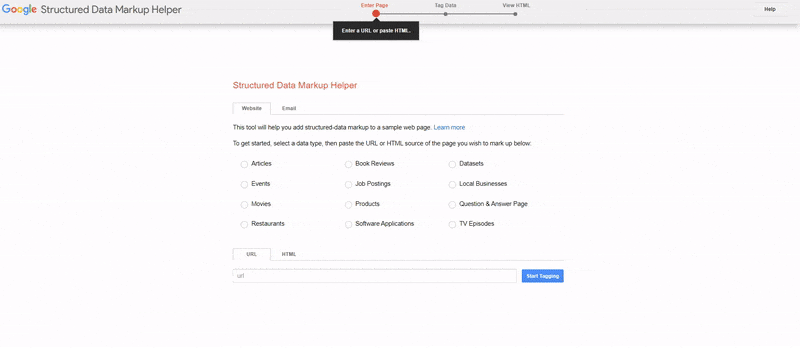 Just follow these steps:
Just follow these steps:
- Select “Products”
- Add your product page’s URL or add the page’s HTML
- Click “Start tagging”
- Highlight text or images on the page and select the relevant tag, like “Image” or “Name”
- Select “Add missing tags” for any tags you can’t add via highlighting
- Click “Create HTML” when finished tagging
- Download the product markup
When you add any structured data to your page, place the markup before your closing “</head>” tag, near the bottom of your page. If you aren’t familiar or comfortable working with the HTML version of your pages, pass the code and information along to your company’s developer.
Test all product schema markup
Even if you’re familiar with using structured data, don’t skip testing it. Double-checking your product schema markup saves you time, as well as ensures that your schema displays.
You can also preview your schema markup by testing it, which makes double-checking for typos even easier. Use Google’s Structured Data Testing Tool or Rich Results Test Tool to check your product markup:
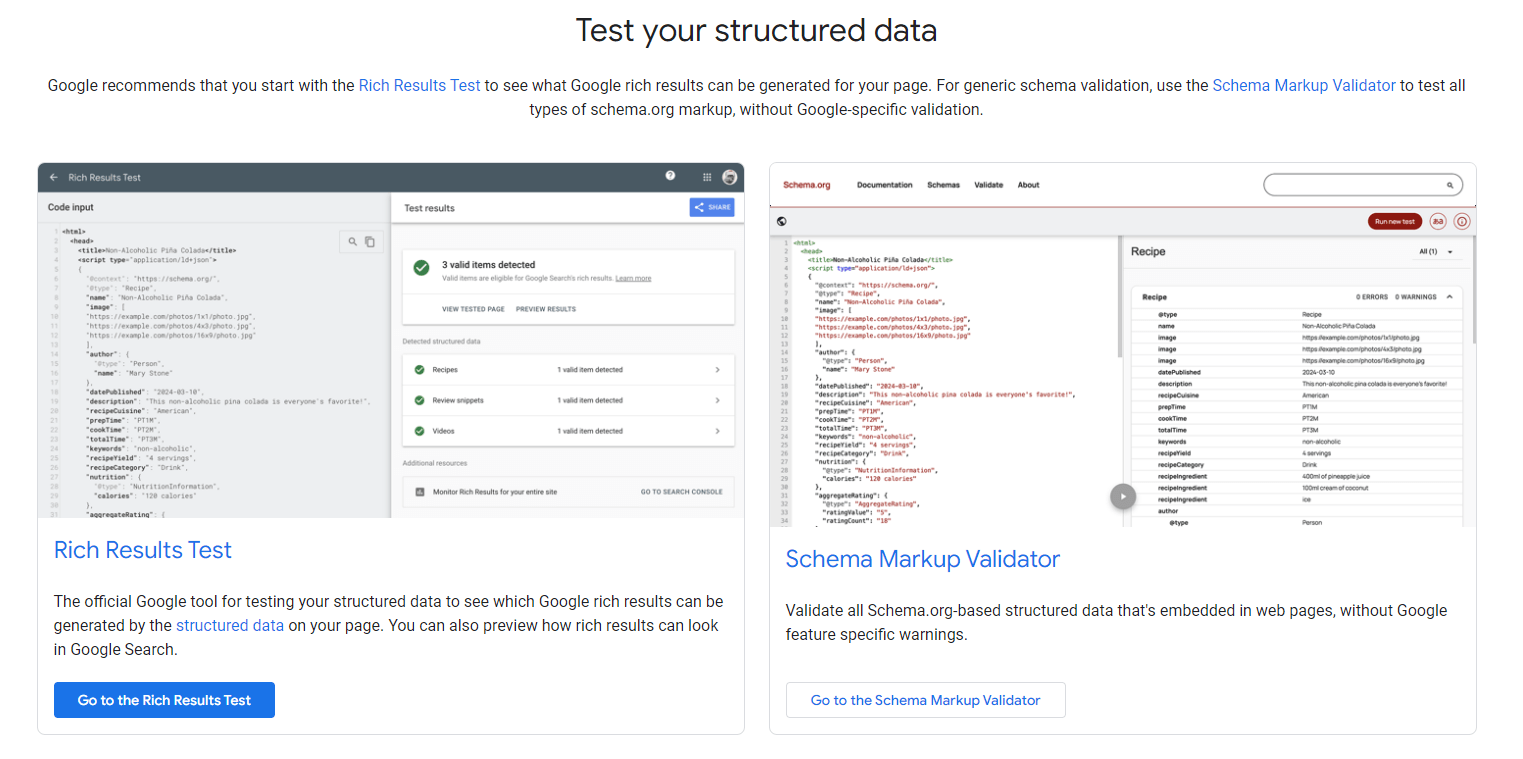
Just enter your structured data code or page URL, and Google will do the rest. Your report will highlight any errors and warnings, as well as share how to fix those issues. If you use the Rich Results Test Tool, you can also preview how your markup and page will appear in search results.
7. Embrace AR
Augmented reality uses computer-generated 3D objects to create an interactive experience that combines real-world and computer-generated objects.
With augmented reality, your business gets a brand-new way to engage (and help) online shoppers. Upgrading your product listings with an augmented reality feature can help users see your product in-action, as well as experiment with its placement in their homes.
 The 3D version of your product can help shoppers see every angle and feature of your product. Plus, they can preview the product in their home. Both perks give users more confidence in purchasing your item.
The 3D version of your product can help shoppers see every angle and feature of your product. Plus, they can preview the product in their home. Both perks give users more confidence in purchasing your item.
Like product schema markup, augmented reality also enhances your product page’s look in search results. On Google, for example, your site will feature a “View in 3D” button. This button expands your real estate in search results and helps your website stand out. 
How to use AR for ecommerce SEO
If you think your customers could benefit from AR acess to your products, consider implementing the necessary changes to your website. Research what your website would need to support AR experiences. Then, make the necessary updates to make it happen.
With this improvement to UX, you could increase conversion rates on your site, which means more sales and revenue.
For the best results, start small and focus on your best-selling products. If you see positive results from offering augmented reality experiences on these items, scale and add the feature to the rest of your lineup.
8. Achieve ADA compliance
Compliance with the ADA is another ecommerce SEO trend that companies need to prioritize.
ADA compliance refers to the Americans with Disabilities Act Standards for Accessible Design. This act states that all electronic and information technology, like websites, must be accessible to everyone, including people with disabilities.
ADA compliance can look like larger text or text-to-audio features:
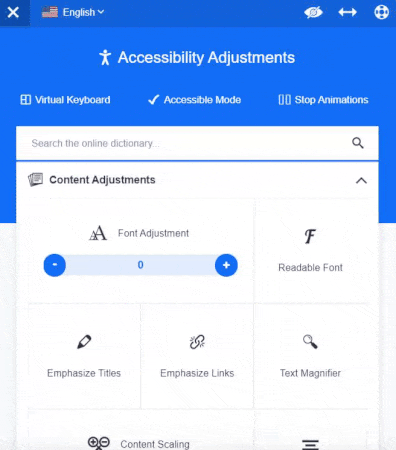
Ignoring ADA standards does more than excluding your prospects — it poses a serious risk to your ecommerce store’s future. Noncompliance can lead to fines and lawsuits against your business. First-time violations, for example, can result in a $55,000 to $75,000 fine, while repeat violations warrant a $150,000 fine.
Excluding part of your target market, intentionally or unintentionally, prevents your business from reaching its full potential when it comes to sales and revenue. Invest in ADA compliance as a part of your ecommerce SEO strategy, and your company can reach your target market and grow.
How to implement ADA compliance changes for ecommerce SEO
Make this trend a part of your strategy with these ecommerce SEO tips:
Hire a web design agency that specializes in ADA compliance
While you can become ADA compliant in-house, it’s difficult for small-to-midsized businesses (SMBs) with fewer team members. It’s even more challenging if your developer doesn’t know anything about ADA compliance.
That’s why hiring a web design agency that specializes in ADA compliance is a smart choice. When you go this route, you get instant access to an entire design and development team with ADA compliance experience. They can get your website compliant fast, which saves your ecommerce company time and spares you the worry over non-compliance.
Focus on automated ADA compliance versus manual ADA compliance
Whether you decide to become compliant with the help of an in-house developer or agency, try to automate your compliance efforts as much as possible. This approach will save you time, plus reduce errors.
If you have a WordPress website, you can choose from a few different plugins, like Accessibility Suite, that will help automate your ADA compliance. In most cases, these plugins will require a paid subscription. Should you partner with an agency, stick to ones that offer automated ADA compliance services.
9. Start video marketing
Video marketing matters to ecommerce SEO for 2025, and that’s not changing anytime soon.
When it comes to search results, video earns a prime spot. You can end up in the featured snippet, which tops all other results:

The video-based Google search results also encourages users to click on the results instead of lookinh further:
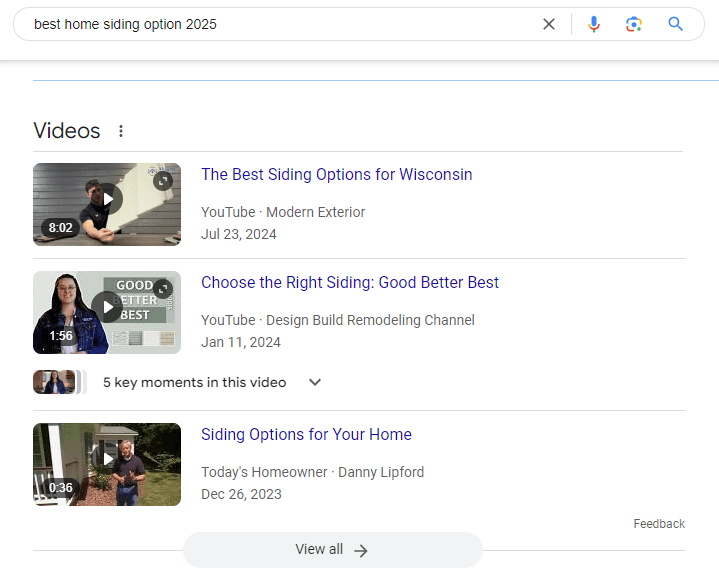
Investing in video marketing can help your business earn a spot in the video carousel. That means your ecommerce store could appear twice in Google search results. Around 90% of shoppers say that video helps them make a purchase decision. That’s one reason why video improves conversions by 86%, meaning more sales and revenue for your business.
Using and adding video to your website can have a significant impact on your rankings in search results. In fact, studies show you’re 53X more likely to rank on the first page of Google by using video on your site. That’s because video improves user behavior metrics that Google monitors, like dwell time.
How to use video marketing for ecommerce SEO
Incorporate video into your strategy with these ecommerce SEO tips:
Go for a homemade video approach
A lot of businesses avoid video marketing because they worry about creating a blockbuster-level video. When it comes to video marketing, though, you don’t have to shoot a Hollywood-level film. People want genuine content and accurate information first.
Shoot your first video, like a product overview or live stream, with a smartphone. Just remember to outline what you want to say beforehand. That way, your video will remain to-the-point and keep users engaged.
Create multipurpose videos

For the most effective video marketing strategy, focus on filming multi-use videos. These are videos that you can re-use across your website. Generally, these videos will cover broad topics, which makes them versatile. As an example, your business may shoot a testimonial video. You can upload this video to multiple pages on your site, from your product pages to your about page. Even better, you can share this clip on social media.
10. Prioritize sustainability
Now more than ever, consumers are concerned with sustainable shopping. If you aren’t promoting your eco-friendly perks, you could be missing out on sales online.
Even if you aren’t a fully green company, highlighting your sustainable features helps people searching for eco-friendly, vegan, or related products land on your website.

How to prioritize sustainability on your website
Here are a few ways you can highlight your sustainable approaches to ecommerce:
- Packaging: Eco-friendly packaging is a simple change to make that can help you show your consumers that you care about the environment. Swapping foam packing peanuts for biodegradable ones, for example, is a clean switch that makes all the difference.
- Recycling: You can recycle in many ways. For example, if you sell products that you can’t use again once opened, be sure to dispose of and reuse these products efficiently.
- Monitoring returns: While many people want returns on anything they buy, that requires extra fuel, energy, and waste. Having a sustainable return policy is one option that prevents unnecessary waste while helping those who get damaged or broken goods feel secure.
If you don’t implement any focus on sustainability, now is the time to start! Use the suggestions above to brainstorm realistic ways for your company to go more green. Your ecommerce SEO will thank you!
11. Target local improvements
Though many ecommerce companies focus on online sales only, you should also target local SEO improvements if possible. Making your in-store options available online can open up your advertising opportunities and give you more chances to stand out.
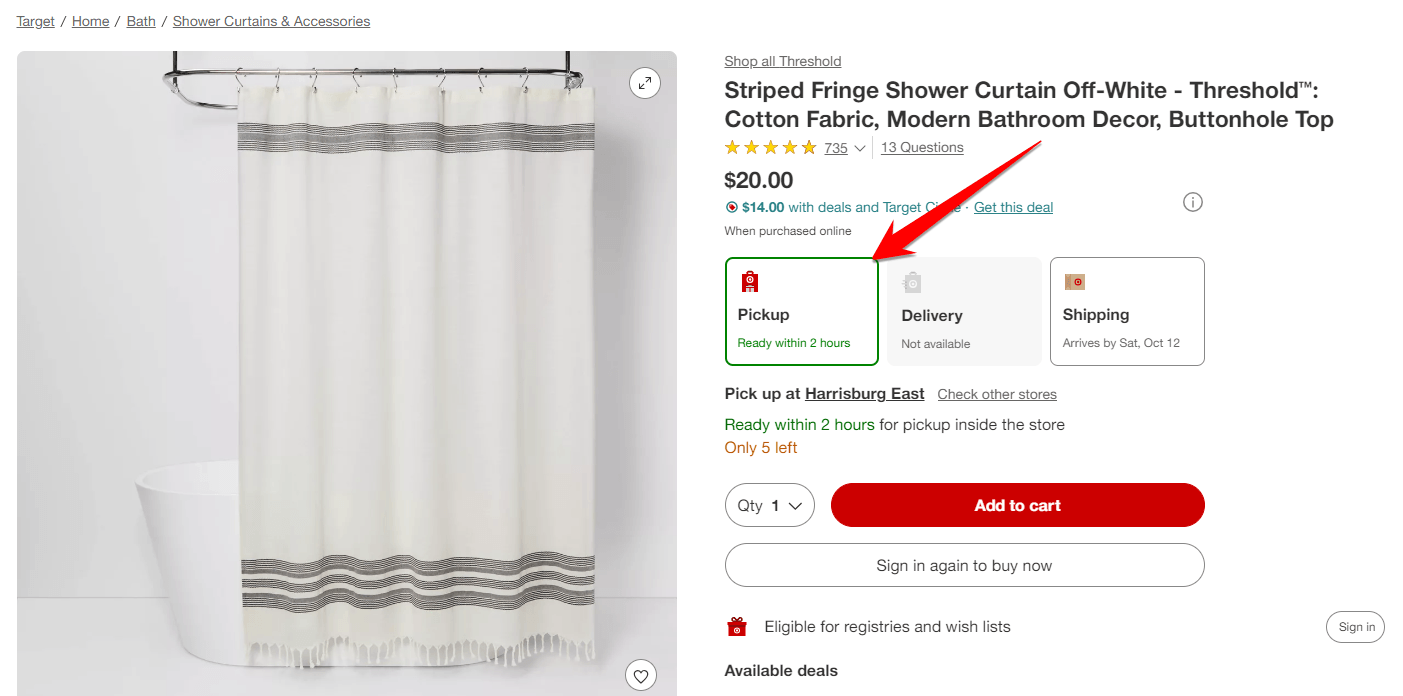
This trend is especially important for companies who want to attract in-person business as well as ecommerce improvements.
How to target local improvements
Local SEO changes you can make include the following:
- Target local consumers with local keywords
- Offer pickup in-store, buy now pickup later, and related shipping options for local buyers
- Offer in-person and online deals to incentivize both types of purchases
12. Invest in personalization
Did you know that 75% of consumers expect personalization to make navigation easier both in-store and online? That means if you haven’t invested in personalization, it’s time, or else you’ll keep falling behind consumer needs. This and other ecommerce industry trends can benefit your SEO and other strategies.
How to personalize for ecommerce
Here are a few examples of personalization that can help your SEO:
- Create helpful content tailored to keywords that people search for
- Make sure your product descriptions are effective
- Conduct audience research to make sure your content appeals to readers
- Measure analytics and adjust as necessary
Start optimizing your ecommerce SEO plan for 2025
If you want to make the most of your ecommerce business’s presence, you must start optimizing your SEO campaign. Optimizing your ecommerce SEO plan will help you get a leg up on the competition in the next year. Want to stay ahead of the competition?
Contact us online today, or give us a ring at 888-601-5359 to speak with a strategist!
-
 Macy is a content marketing consultant with over five years of experience creating content for dozens of industries including home services, recreation, and education. She’s written about every marketing topic under the sun, from SEO to AI to email marketing. Her work has been featured by Search Engine Journal, HubSpot, Entrepreneur, Clutch, and more. In her free time, Macy enjoys crafting, reading comic books, and walking her dog Daisy.
Macy is a content marketing consultant with over five years of experience creating content for dozens of industries including home services, recreation, and education. She’s written about every marketing topic under the sun, from SEO to AI to email marketing. Her work has been featured by Search Engine Journal, HubSpot, Entrepreneur, Clutch, and more. In her free time, Macy enjoys crafting, reading comic books, and walking her dog Daisy. -

WebFX is a full-service marketing agency with 1,100+ client reviews and a 4.9-star rating on Clutch! Find out how our expert team and revenue-accelerating tech can drive results for you! Learn more
Try our free Marketing Calculator
Craft a tailored online marketing strategy! Utilize our free Internet marketing calculator for a custom plan based on your location, reach, timeframe, and budget.
Plan Your Marketing Budget
Table of Contents
- 1. Optimize for Voice Search
- 2. Build a Stronger Brand
- 3. Create a Positive UX
- 4. Monitor Your Analytics
- 5. Secure Your Site
- 6. Use Product Schema Markup
- 7. Embrace AR
- 8. Achieve ADA Compliance
- 9. Start Video Marketing
- 10. Prioritize Sustainability
- 11. Target Local Improvements
- 12. Invest in Personalization
- Start Optimizing Your Ecommerce SEO Plan for 2025

SEO Success with KOA

Proven Marketing Strategies
Try our free Marketing Calculator
Craft a tailored online marketing strategy! Utilize our free Internet marketing calculator for a custom plan based on your location, reach, timeframe, and budget.
Plan Your Marketing Budget






